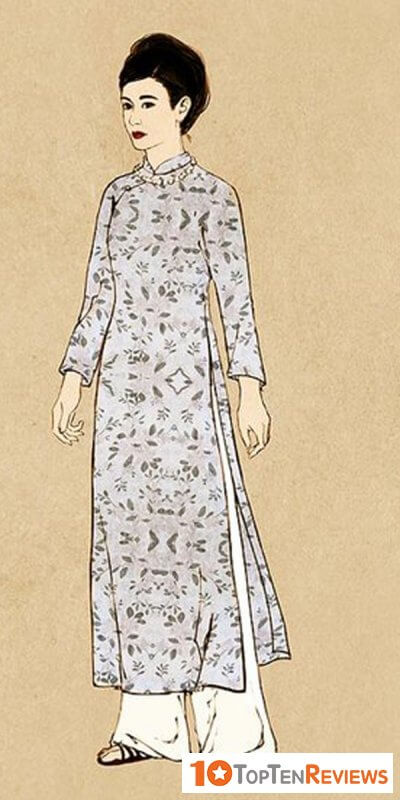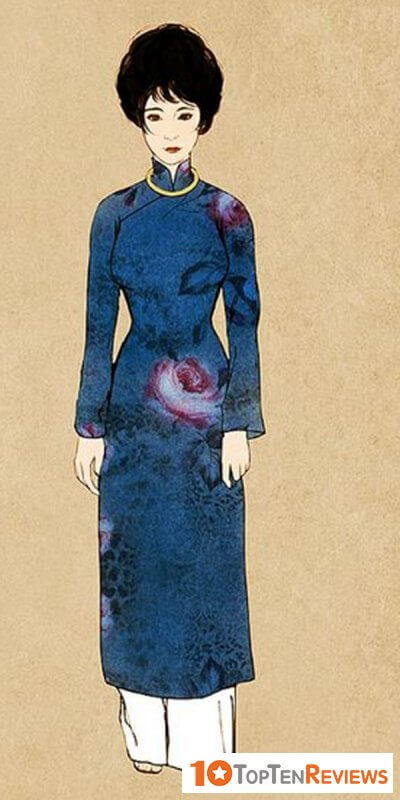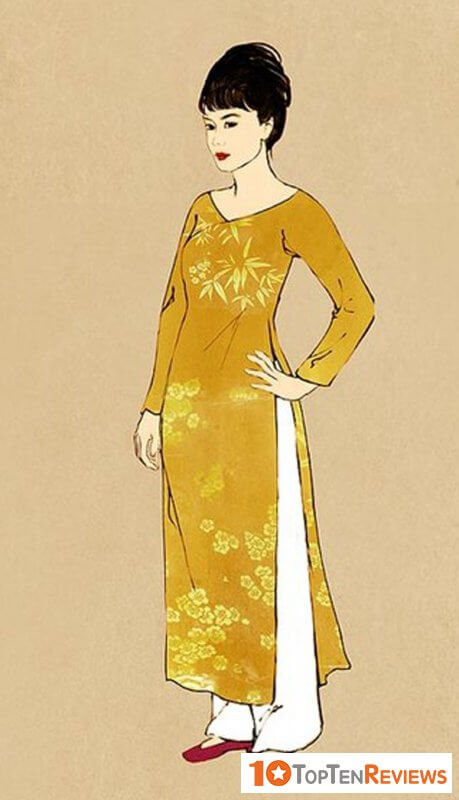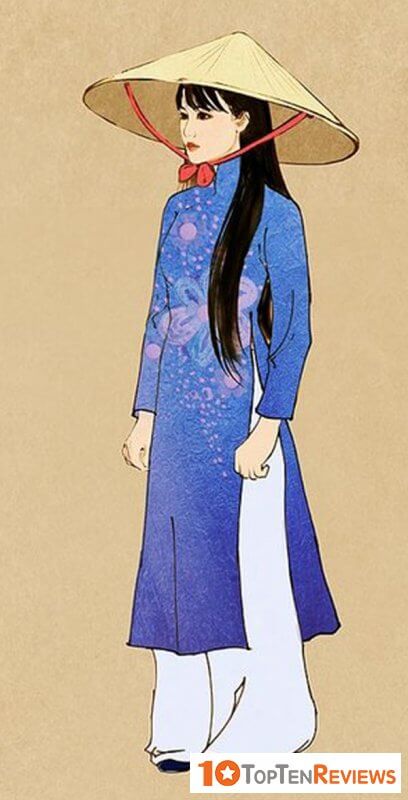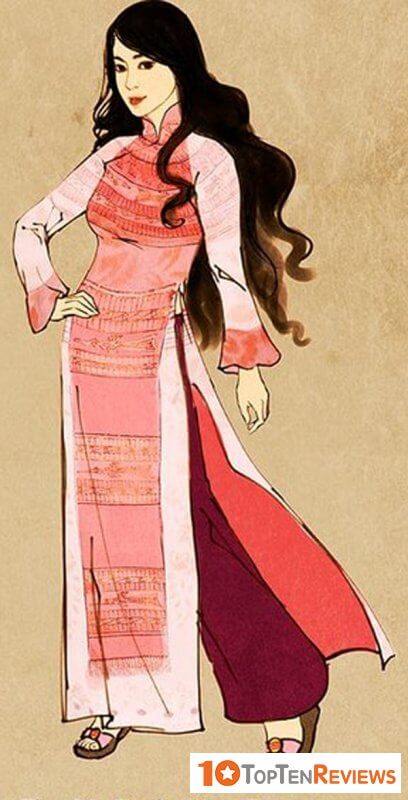Our country has gone through countless historical periods associated with specific developmental stages in cultural identity, customs, and habits. The costumes of the Vietnamese people in each period have created their own unique imprints, especially women's ones. Here, Top Ten Reviews invites you to see the characteristics of Vietnamese women's clothing through the periods as below:
- 2000 BC - 200 AD: Hung King period with Dong Son culture - Before being influenced by the Han Dynasty
- 11th - 13th centuries: Ly Dynasty
- 15th - 16th centuries: Tran Dynasty to Tien Le
- 15th - 16th century: Le Dynasty
- 16th century: Mac Dynasty
- 17th - 18th centuries: Hau Le Dynasty
- 18th century: Hau Le Dynasty - Tay Son
- 19th century: Nguyen Dynasty
- Mid 20th century to present
2000 BC - 200 AD: Hung King period with Dong Son culture - Before being influenced by the Han Dynasty
Women in Hung Vuong's period often wore a short shirt to the belly, split the chest, tight to the body, wearing a full-breasted bib with a round neck close to the neck, decorated with pictures of rice grains. There are also short, square-necked blouses that show part of the shoulders and chest, or full chest, partially open the shoulders and on the back. The latter two types can be worn under the hood or buttoned on the left side. There are decorative patterns on the shirt. For example, the belt has three rows of evenly spaced decorative dots wrapped around the belly. The designs on the bronze drums or the carvings on the brass knife handles show that Vietnamese costumes have been shaped very clearly. This is also the reason for the cultural identity revealed in the traditional clothes of the Vietnamese people today. Accordingly, both women's and men's costumes have been clearly distinguished, in which women's costumes are more affluent and have the most artistic value.
The forerunner of the modern ao dai and the typical Vietnamese women's clothing, a bun, and a shirt on the left (different from China's right lapel) are also considered to have appeared from this period.
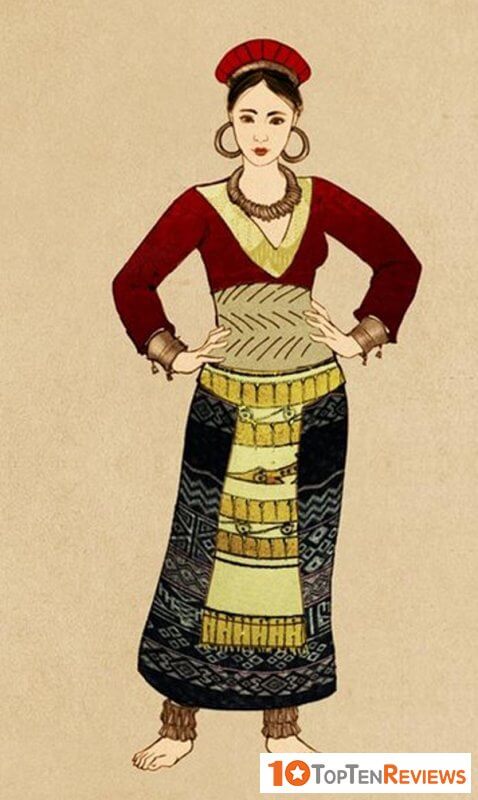
11th - 13th centuries: Ly Dynasty
As one of the heydays of the feudal dynasties, the king of the Ly dynasty issued regulations on the dress to distinguish between classes of people and mandarins. The king also showed the spirit of independence and self-reliance of the nation by not using the brocade of the Song dynasty to make vestments but using domestic fabrics.
The most striking feature in the clothing of this period was the development of a new level of decorative patterns. No longer are rudimentary and straightforward images, twisted designs, crochet shapes ... are delicately embroidered on the costumes, showing the meaningful harmony between nature and human life.
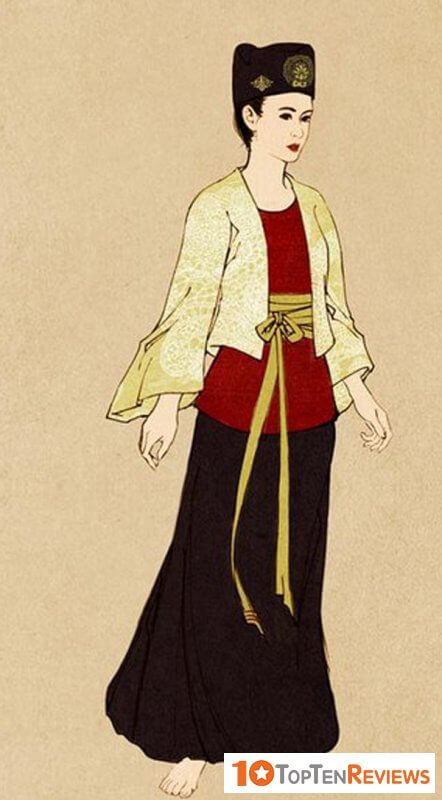
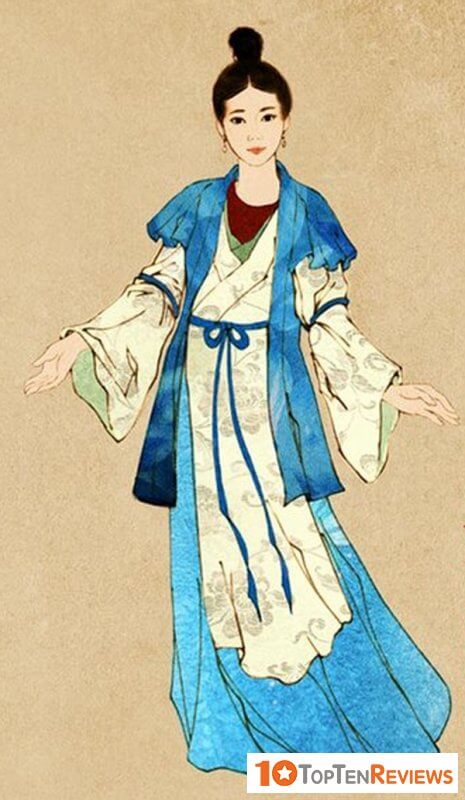
15th - 16th centuries: Tran Dynasty to Tien Le
The most outstanding feature in the Tran dynasty was the defeat of the Nguyen - Mong invaders 3 times. Due to the continuous confrontation with powerful enemies, the mentality of being ready to "death to death for the country to live" was always present in the life of the army and people of the Tran Dynasty, affecting both the clothes and aesthetic conceptions of the people whole nation.
Viet Nam women's clothing is divided into 2 phases. From the 13th to the 15th century, it featured a shirt with wide sleeves. A cloak has a deep-cut collar and a strapless camisole inside. By the 15th-16th centuries, the collar was discreetly sewn with a round neck, neater sleeves during the late Tran and Tien Le dynasties. However, the colors are more sophisticated and eye-catching.
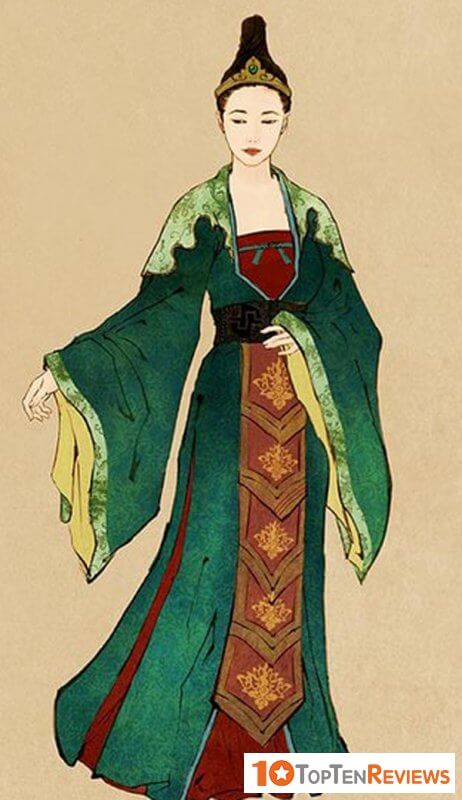
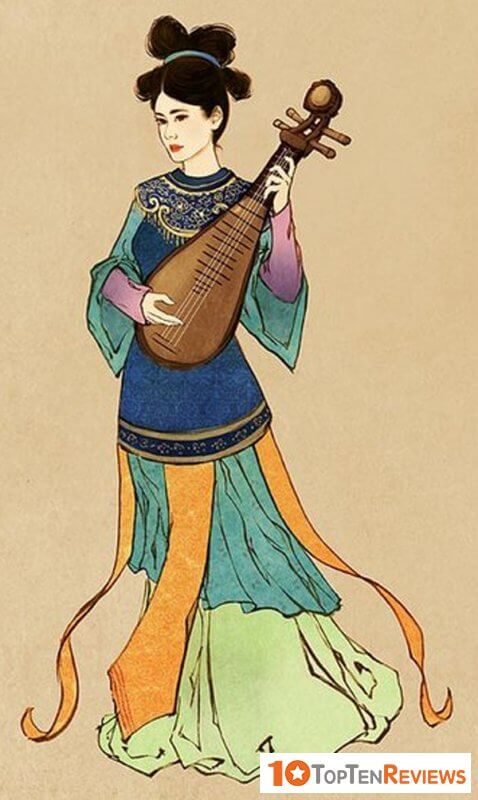
15th - 16th century: Le Dynasty
It can be said that the Le Dynasty was the sublimation period of Vietnamese women's costumes when there were many designs and highly diverse designs during this period. But in general, the costumes of the Le Dynasty have quite sophisticated designs with many layers of robes and eye-catching colors. Influenced by Chinese culture, the traditional costumes of the Le Dynasty have not escaped the shadow of this mighty land. The costumes of Vietnamese women in the Le Dynasty have many similarities with the Hanfu robes of China with wide sleeves and a large waist belt used to fix this robe. It is because of the influence of Chinese culture that this costume is not welcomed by many people.
The costume in this dynasty was very close to the four-body shirt, wearing a raven beak of Vietnamese village women in the 19th-20th centuries, with the appearance of "fashion" to have long hair, wear a scarf, and turn the street. In the middle, wearing a round neck long dress with a long belt in front of the abdomen, long and wide skirt. More fashionable, aristocratic women also wear colorful Siamese bands that hang down their legs, contributing to a graceful and graceful beauty. Jewelry is also increasingly diverse in design and color, with flat round bracelets, gourd-shaped earrings, lotus-shaped or beautiful round earrings.
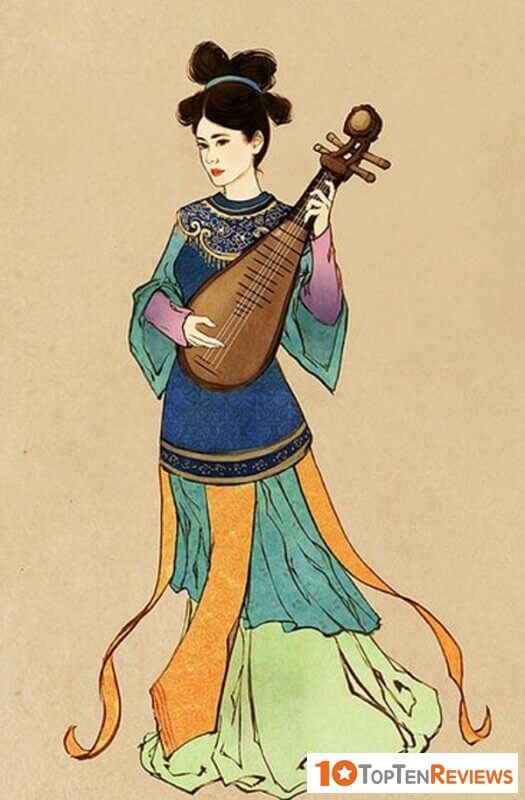
16th century: Mac Dynasty
The costume in this dynasty was very close to the four-body shirt, wearing a raven beak of Vietnamese village women in the 19th-20th centuries, with the appearance of "fashion" to have long hair, wear a scarf, and turn the street. In the middle, wearing a round neck long dress with a long belt in front of the abdomen, long and wide skirt. More fashionable, aristocratic women also wear colorful Siamese bands that hang down their legs, contributing to a graceful and graceful beauty. Jewelry is also increasingly diverse in design and color, with flat round bracelets, gourd-shaped earrings, lotus-shaped or beautiful round earrings.
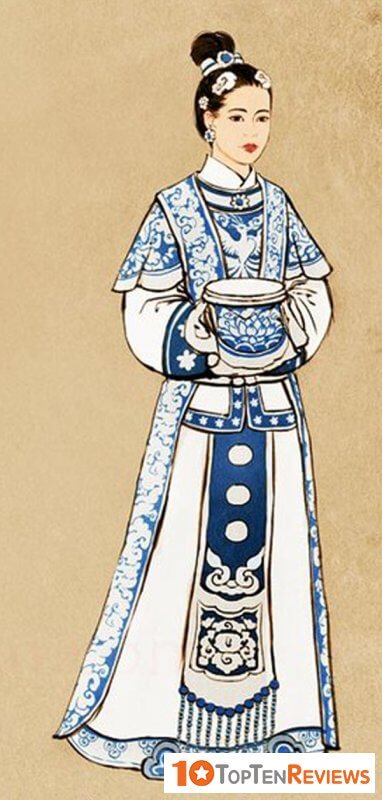
17th - 18th centuries: Hau Le Dynasty
Until the Hau Le period, many different styles of costumes appeared, and the dresses showed their own culture. The women's costumes of the Hau Le period were discreet, with many layers of different colors. The most characteristic is still the wide sleeve. The maid costume (or mandarin in the palace) has a round neck, can be long or short sleeves, a single or layered skirt, wide or narrow sleeves...
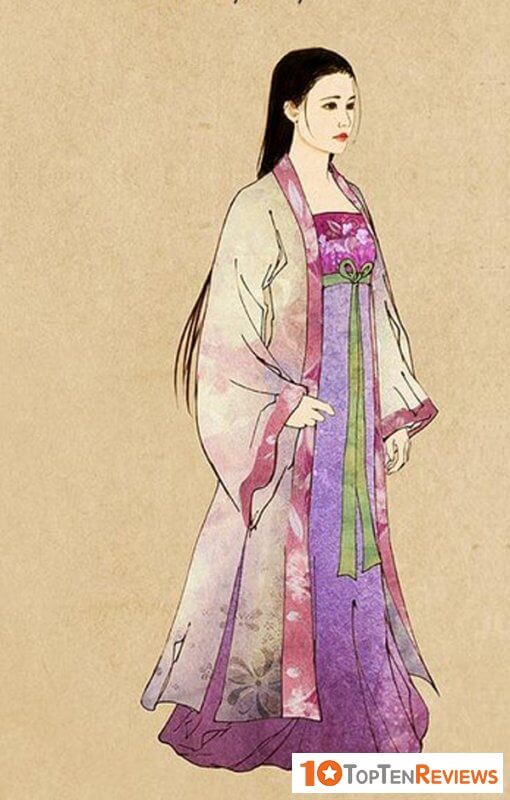
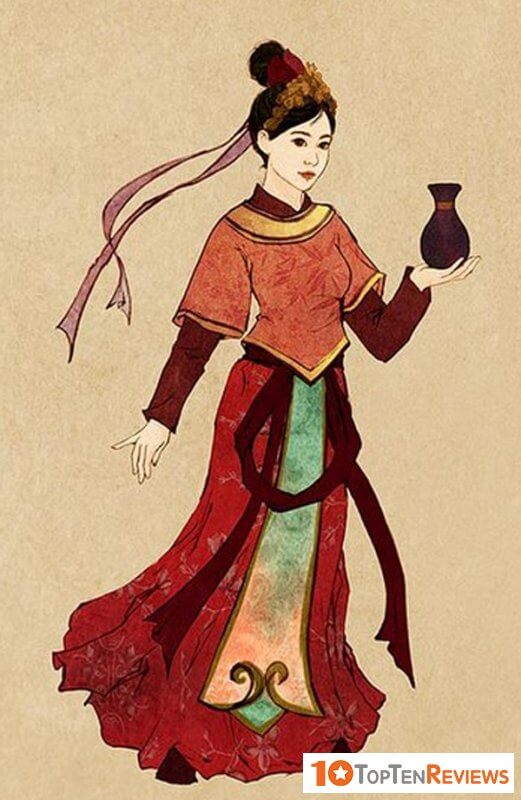
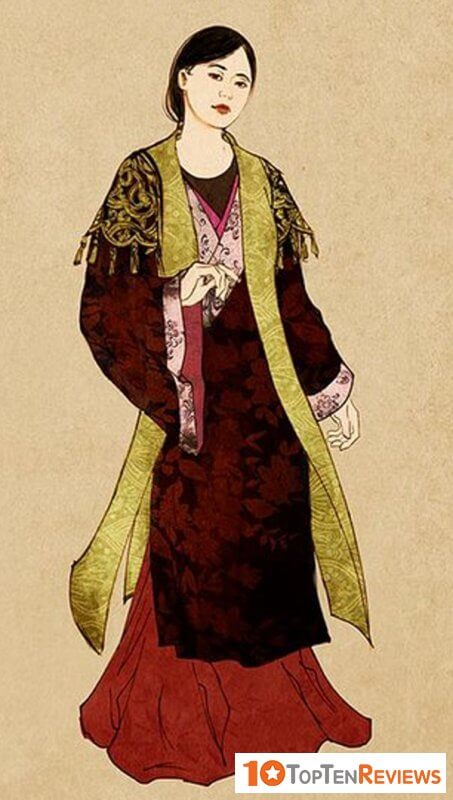
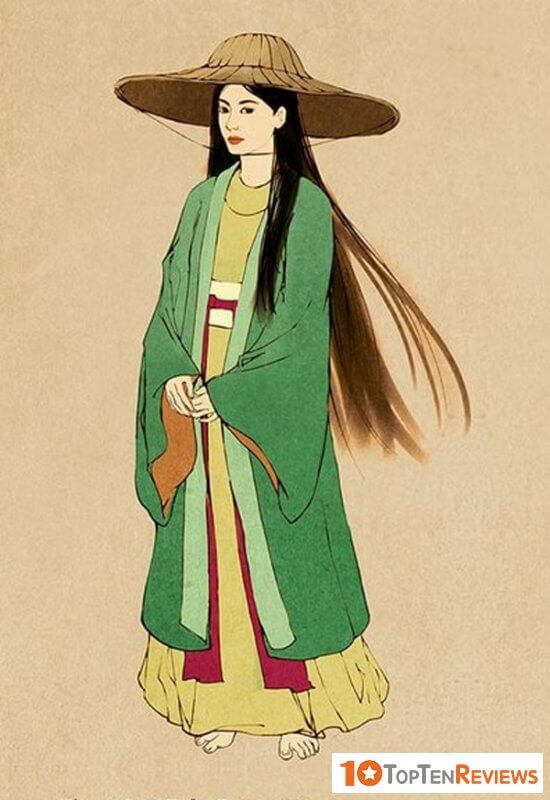
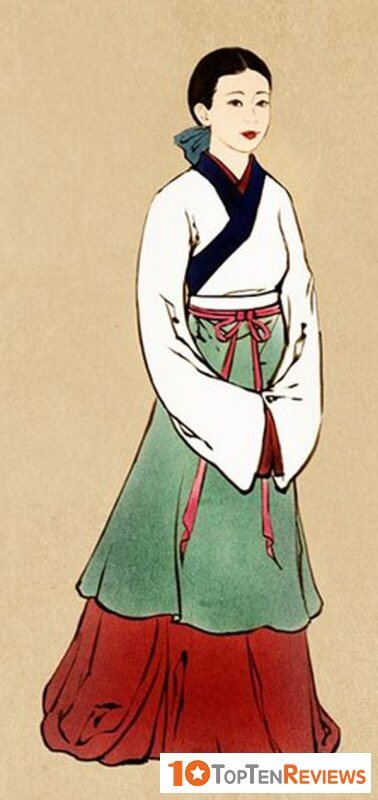
18th century: Hau Le Dynasty - Tay Son
Women's costumes in the Tay Son period were quite sophisticated with embroidery, meticulous sewing, and especially women's costumes in this period were a bit like war uniforms. Instead of skirts, they wore pants. In the early 19th century, women were forbidden to wear dresses because it was considered vulgar.
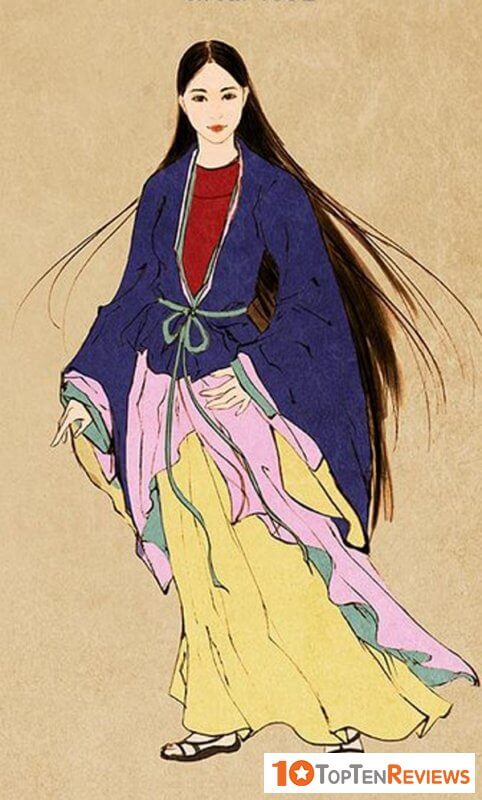
19th century: Nguyen Dynasty
Social life in this period had a significant influence on people's costumes. If the costumes of the ruling class are increasingly "mixed" according to the race for semi-seasonal reform, in society, traditional costumes such as ao dai, camisole, four-body shirt, raven beak scarf, etc. hat strap ... has become the breath and the cultural crystallization of the whole nation. The peach bib goes beyond the royal palace to join the woman who needs to work "in the fields of rain and sunshine" or with a four-piece shirt in Lim festivals. At the same time, Western fashion with flared skirts Modern and innovative dresses are also gradually introduced and popular with young aristocratic women. Queen Nam Phuong - the last queen of Vietnam's feudal dynasties, was very fond of wearing Western costumes and dressed very well.
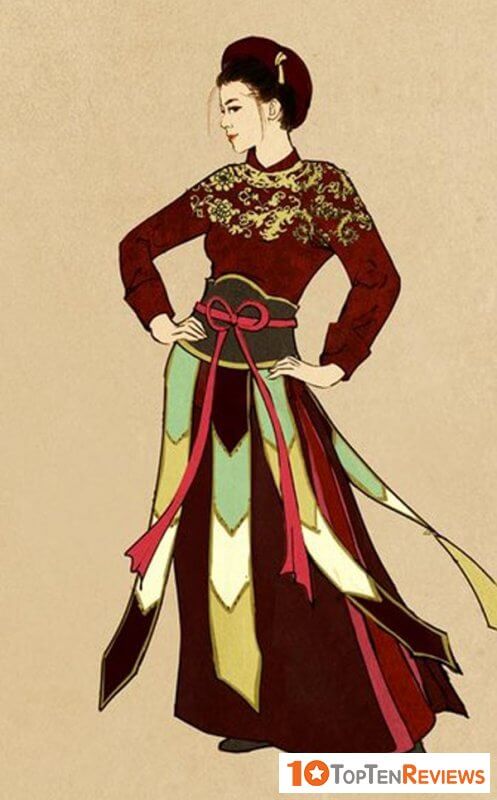
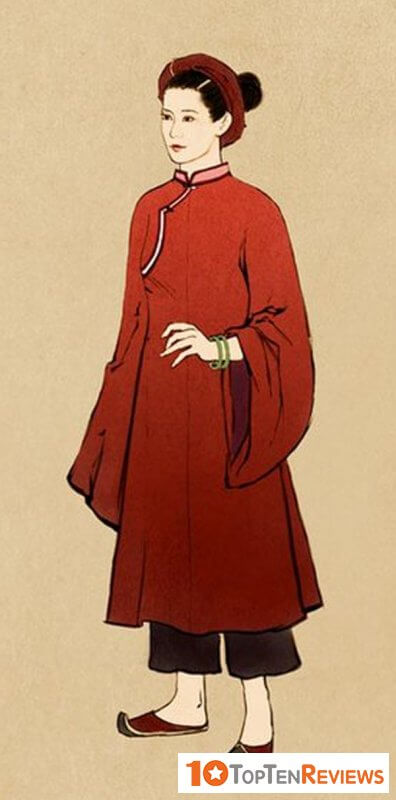
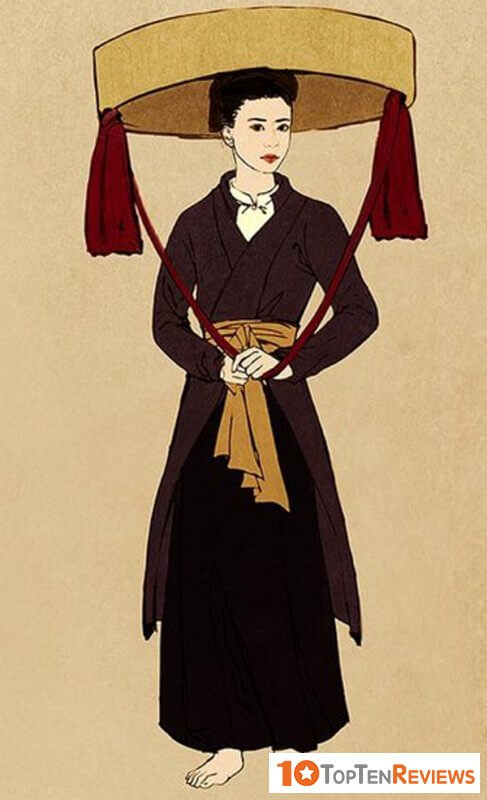
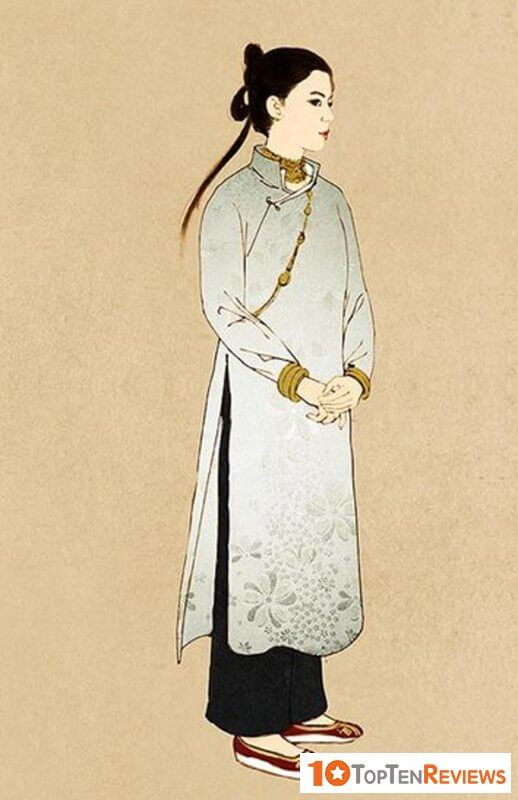
Mid 20th century to present
In the 19th and 20th centuries, the Ao Dai became an indispensable garment in Vietnamese social life. From the queens and princesses in the royal palace with formal and aristocratic ao dai made of brocade, embroidered with gold thread... to the ladies and gentlemen who wear ao dai to school, to the office, to the market, walking. For a long time in the 19th and 20th centuries, the ao dai became casual clothing loved by men, women, and children in Vietnam. Experiencing many historical changes and introducing Western fashion trends, Ao Dai has made many improvements according to specific directions. However, regardless of any reform movement, from Le Mur Ao Dai to the current long-sleeved ao dais, the Ao Dai still demonstrates the immutability that not all costumes can do. It exalts the figure and gentle charm of a woman.
